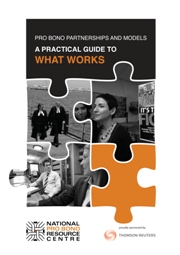
Pro Bono Partnerships and Models: A Practical Guide to What Works - eBook
|
eBook - ProView Price: N/A |
Date: 29/05/2013 Code: 41484550 Lawbook Co., AUSTRALIA |
Enquiry SentA member of our support team will be in touch with you within 1 business day. Sales Enquiry FormPro Bono Partnerships and Models: A Practical Guide to What Works - eBookFor questions about how to use this product or to get help with your account please visit the Help Centre or Contact Support directly. |
Browse:
Available Formats
| Format | Title | Date | Code | Price | |
|---|---|---|---|---|---|
| eBook - ProView | Pro Bono Partnerships and Models: A Practical Guide to What Works - eBook | 29/05/2013 | 41484550 | N/A |
|
Description
Pro Bono Partnerships and Models: A Practical Guide to What Works is a FREE resource that provides practical information on what works well in collaborative pro bono projects.
What Works was created by the National Pro Bono Resource Centre and is available free of charge as a downloadable PDF or as an easily navigable e-book using Thomson Reuters' ProView e-book platform.
Drawing on the expertise of a broad range of stakeholders with experience in the delivery of pro bono legal assistance, this resource will be useful for those providing pro bono legal services (including law firms of all sizes, pro bono clearinghouses and referral schemes, barristers, in-house and government lawyers, and law schools), and those seeking pro bono assistance (including community legal centres and other not-for-profit organisations). It provides tips on how to attract pro bono partners and maintain effective partnerships.
What Works will also be of interest to everyone in the legal assistance sector, given the increasing complexity and sophistication of the delivery of pro bono legal services in Australia. It identifies the features of effective models used to deliver pro bono legal assistance, and includes illustrative case studies. The included models are:
- Case referral
- Clinics
- Outreach
- Secondments
- Fellowships
- Co-counselling
- “Secondary consults” or “phone a friend” assistance
- Telephone, video conferencing, online and mobile technology
- Law reform
- Assistance to non-legal not-for-profit organisations and charities
- Community legal education
- Non-legal assistance
- International pro bono
You Might Also Like
-
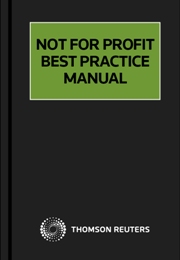
Not for Profit Best Practice Manual eSubscriptioneSub - ProView
N/A
-
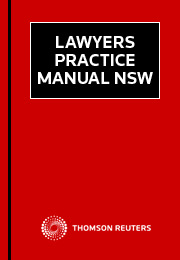
Lawyers Practice Manual NSW eSubeSub - ProView
N/A
-
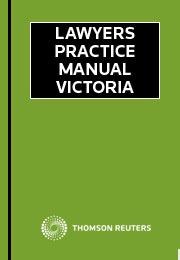
Lawyers Practice Manual Victoria eSubeSub - ProView
N/A
-
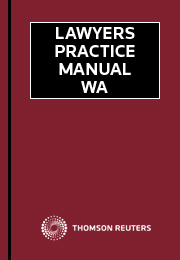
Lawyers Practice Manual WA eSubeSub - ProView
N/A
-
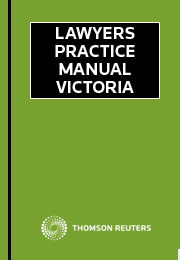
Lawyers Practice Manual Victoria Springvale Legal CentreLooseleaf
N/A
-
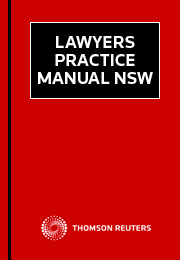
Lawyers Practice Manual NSW Redfern Legal CentreLooseleaf
N/A
-
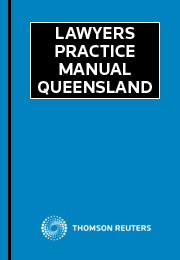
Lawyers Practice Manual Queensland 2 VolumesLooseleaf
N/A
-
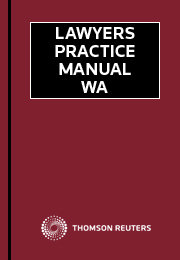
Lawyers Practice Manual Western AustraliaLooseleaf
N/A
-
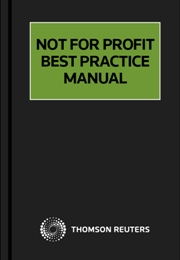
Not For Profit Best Practice ManualLooseleaf
N/A
-
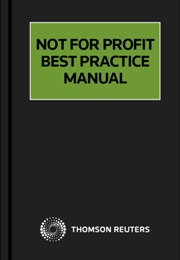
Not for Profit Best Practice Manual (Checkpoint)Online
N/A
Table of Contents
PART 1. WHO WILL FIND THIS RESOURCE USEFUL?
1 WHAT IS IN THIS RESOURCE?
2 WHO WILL FIND THIS RESOURCE USEFUL?
2.1 I am in the early stages of developing a pro bono practice (or growing an existing practice)
2.2 I am a small law firm or a sole practitioner
2.3 I am a community legal centre or a Not-for-Profit organisation
2.4 I am an in-house/corporate lawyer
2.5 I am a government lawyer
2.6 I am an individual lawyer or barrister looking for opportunities to get involved
2.7 I am interested in pro bono in regional, rural and remote (RRR) areas
PART 2. THEMES ARISING FROM CONSULTATIONS
3 IMPORTANCE OF RELATIONSHIPS AND COMMUNICATION
4 IMPORTANCE OF DEVELOPING A STRONG PRO BONO CULTURE
5 WHERE PRO BONO RESOURCES SHOULD BE DIRECTED: GREATEST NEED VS ACHIEVABLE GOALS
6 SIZE MATTERS
6.1 Size of jurisdiction
6.2 Distance from big cities
6.3 Size of law firm (or office)
7 INNOVATION
PART 3. TOOLKIT
8 TIPS FOR PLANNING AND MAINTAINING RELATIONSHIPS
8.1 Planning at the beginning
8.2 Maintaining the relationship
PART 3A. UNDERSTANDING YOUR POTENTIAL PARTNER
9 PRO BONO CLEARING HOUSES AND REFERRAL SCHEMES
10 LARGE LAW FIRMS
10.1 Large law firms: at a glance
11 SMALL FIRMS
11.1 Small firm pro bono: at a glance
12 COMMUNITY LEGAL CENTRES
12.1 Community legal centres: at a glance
13 NON-LEGAL NOT-FOR-PROFIT ORGANISATIONS AND CHARITIES
13.1 Not-for-profit organisations: at a glance
14 BARRISTERS
14.1 Working with barristers: at a glance
15 IN-HOUSE/CORPORATE LAWYERS
15.1 In-house/corporate pro bono: at a glance
15.2 Case studies
15.2.1 Case study: Telstra, King & Wood Mallesons and the National Children's and Youth Law Centre.
15.2.2 Case study: IBM Australia/New Zealand and Ashurst
16 GOVERNMENT LAWYERS
17 INDIVIDUAL VOLUNTEERS
18 LAW STUDENTS
18.1 Students: at a glance
18.2 Case studies
18.2.1 Case Study: The Roster and the Manning Street Project (UQ Pro Bono Centre)
18.2.2 Case Study: The Tasmanian Mental Health Tribunal Representation Scheme (Advocacy Tasmania Incorporated)
PART 3B. MODELS OF PRO BONO LEGAL ASSISTANCE
19 CASE REFERRAL
19.1 Case referral: at a glance
19.2 Case referral: benefits
19.3 Case referral: challenges/limitations
19.4 Features of effective case referral
19.5 Case studies
19.5.1 Case study: Case Referral (Lander & Rogers)
19.5.2 Case study: Document Review Service and Advice Service (Arts Law Centre of Australia)
19.5.3 Case study: Medical Legal Partnership in a Rural Context (Bendigo Health Outreach)
19.6 Case referral through Pro Bono Referral Schemes and Clearing Houses
20 CLINICS
20.1 Clinics: at a glance
20.2 Clinics: benefits
20.3 Clinics: challenges/limitations
20.4 Features of effective clinics
20.5 Case studies
20.5.1 Case study: Self Representation Service (QPILCH)
21 OUTREACH
21.1 Outreach: at a glance
21.2 Outreach: benefits
21.3 Outreach: challenges/limitations
21.4 Features of effective outreach
21.5 Case studies
21.5.1 Case study: Claymore Outreach Clinic (Macarthur Legal Centre and Minter Ellison)
21.5.2 Case study: Homeless Persons Legal Service Clinics (Public Interest Advocacy Centre)
21.5.3 Case study: Housing Legal Clinic, Homeless Persons' Pro Bono Legal Service, Welfare Rights Centre South Australia
22 SECONDMENTS
22.1 Secondments: at a glance
22.2 Secondments: benefits
22.3 Secondments: challenges/limitations
22.4 Features of effective secondments
22.5 Case studies
22.5.1 Case Study: Full-Time/Long-Term (North Australian Aboriginal Justice Agency and Ashurst). 11
22.5.2 Case study: Full-Time/Long-Term (Kingsford Legal Centre And Herbert Smith Freehills)
22.5.3 Case study: Sessional Secondments – Unfair Dismissal Project (Redfern Legal Centre and Clayton Utz)
22.5.4 Case study: Sessional Secondments (Street Law, Australian Government Solicitor and Clayton Utz)
22.5.5 Case study: Sessional Secondments (the Aged-Care Rights Service and Sparke Helmore)
23 FELLOWSHIPS
23.1 Fellowships: at a glance
23.2 Case studies
23.2.1 Case study: Indigenous Wills Support (Geraldton Resource Centre and Clayton Utz)
23.2.2 Case study: Goulburn Valley Project (Loddon Campaspe Community Legal Centre and Clayton Utz)
24 CO-COUNSELLING
24.1 Co-counselling: at a glance
24.2 Co-counselling: benefits
24.3 Co-counselling: challenges/limitations
24.4 Features of effective co-counselling
24.5 Case studies
24.5.1 Case study: Children in Detention (Public Interest Advocacy Centre and Maurice Blackburn)
24.5.2 Case study: Gleneagles (Caxton Legal Centre Inc and Minter Ellison)
25 SECONDARY “CONSULTS” OR “PHONE A FRIEND ASSISTANCE”
25.1 Secondary consults: at a glance
26 TECHNOLOGY-BASED SERVICES: TELEPHONE, VIDEO CONFERENCING, ONLINE AND MOBILE TECHNOLOGY
26.1 Technology-based services: at a glance
26.2 Technology-based services: benefits
26.3 Technology-based services: challenges/limitations
26.4 Features of effective technology-based services
26.5 Case studies
26.5.1 Case study: Lawmail, Lawstuff and Courtstuff (National Children's and Youth Law Centre, King & Wood Mallesons, Telstra, Asic and Sparke Helmore)
26.6 Telephone advice
26.7 Telephone advice: at a glance
26.8 Telephone advice: benefits
26.9 Telephone advice: challenges/limitations
26.10 Features of effective telephone advice
26.11 Case studies
26.11.1 Case study: Telephone Advice Service (Queensland Advocacy Incorporated)
26.11.2 Case study: Telephone Advice Service (Macarthur Community Legal Centre)
26.11.3 Case study: Lawaccess NSW
26.12 Video-conferencing
26.13 Video-conferencing: at a glance
26.14 Video-conferencing: benefits
26.15 Video-conferencing: challenges/limitations
26.16 Features of effective video-conferencing
26.17 Case studies
26.17.1 Case study: Connecting Country to City Legal Clinic Service (Welfare Rights Centre South Australia and Minter Ellison)
26.18 Website
26.19 Email
26.20 Email: at a glance
26.21 Email: benefits
26.22 Email: challenges/limitations
26.23 Features of effective email advice
26.24 Case studies
26.24.1 Case study: Lawaccess Nsw
27 LAW REFORM AND POLICY WORK
27.1 Law reform and policy work: at a glance
27.2 Law reform and policy work: benefits
27.3 Law reform and policy work: challenges/limitations
27.4 Features of effective law reform and policy work
27.5 Case studies
27.5.1 Case study: Sexual Assault Communications Privilege (Womens Legal Service NSW, Herbert Smith Freehills, Ashurst, Clayton Utz)
28 ASSISTANCE TO NON-LEGAL NOT-FOR-PROFIT ORGANISATIONS AND CHARITIES
28.1 Assistance to organisations: at a glance
28.2 Assistance to organisations: benefits
28.3 Assistance to organisations: challenges/limitations
28.4 Features of effective assistance to organisations
28.5 Case studies
28.5.1 Case study: PILCHConnect
28.5.2 Case study: Fred Hollows Foundation
28.5.3 Case study: Amnesty International Australia and DLA Piper
29 COMMUNITY LEGAL EDUCATION
29.1 Case studies
29.1.1 Case study: Phang Legal and Harris Park Community Centre
29.1.2 Case study: Hobart Community Legal Service and DLA PIPER
30 NON-LEGAL ASSISTANCE
30.1 Case studies
30.1.1 Case study: Employment Law Centre of Western Australia Inc
31 INTERNATIONAL PRO BONO
31.1 International pro bono: at a glance
31.2 International pro bono: benefits
31.3 International pro bono: challenges/limitations
31.4 Features of effective international pro bono
31.5 Case studies
31.5.1 Case study: trial advocacy workshops
31.5.2 Case study: A4ID
eBooks and packages including an eBook may not be returned once the software key has been supplied. Your rights as a customer to access and use the ProView™ software and a ProView eBook are subject to acceptance of the ProView content licence agreement.
NB
An email with a registration key and instructions for accessing your eBook will be sent after checkout. For existing ProView users the eBook will appear in your library after checkout.
Forthcoming/pre-order eBooks will be available after the publication date.
The ProView app is not currently available on Kindle. See the latest system requirements
 General Practice
General Practice